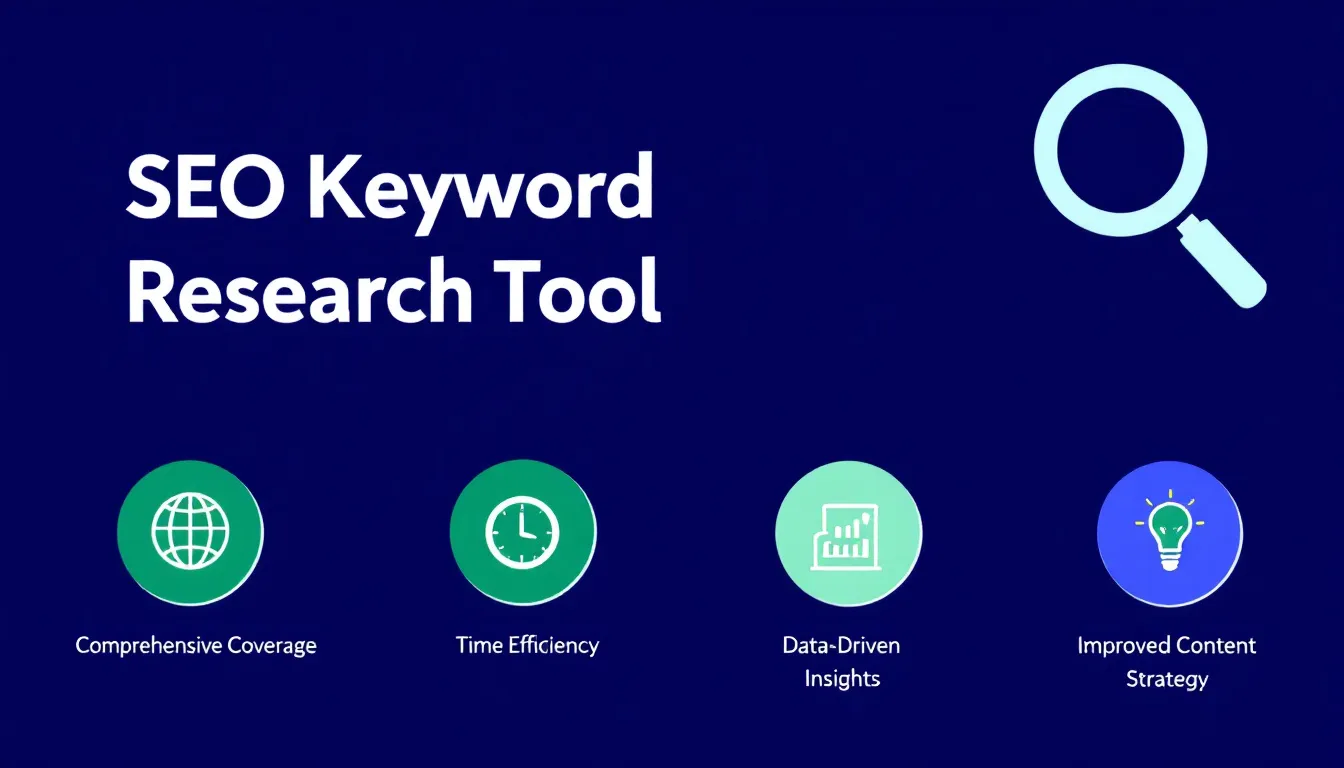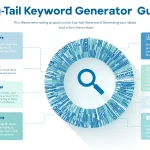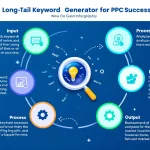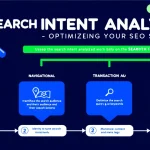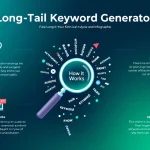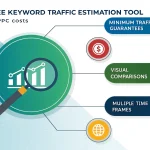SEO Keyword Research Tool
Is this tool helpful?
How to Use the SEO Keyword Research Tool Effectively
This SEO Keyword Research Tool helps you generate a tailored list of keywords to strengthen your organic traffic strategy. Follow these steps to use the tool and get the best results:
- Enter the main topic: Type your primary subject in the first field. For example, try “Renewable Energy Solutions” or “Digital Marketing Strategies”.
- Specify the search intent (optional): Select a search intent if you want to focus on a specific type of query, such as “purchase guides” or “tutorials”.
- Choose types of keywords (optional): Pick the keyword formats you want, like “long-tail phrases” or “question-based queries”, to refine your results.
- Define your industry or niche (optional): Enter your sector for sharper results. Examples include “Renewable Energy Market” or “Online Education Technology”.
- Generate the keyword list: Click the button to process your input and receive a detailed keyword list.
- Review and analyze: The tool organizes keywords by relevance, search volume, and competition to guide your SEO focus.
- Copy and save results: Use the copy feature to transfer the keyword list to your preferred documents or SEO tools.
Using this workflow consistently helps you identify high-impact keywords that directly support your content and SEO goals.
What Is This SEO Keyword Research Tool and Why Use It?
This SEO Keyword Research Tool is designed to simplify keyword discovery by generating detailed keyword lists customized to your specific topic and industry. It uncovers relevant search terms while considering user intent, keyword type, and market niche, helping you build a smarter organic traffic strategy.
The tool saves you time by automating extensive keyword research and provides you with a broad spectrum of keywords including short-tail, long-tail, and Latent Semantic Indexing (LSI) phrases. It supports your content planning by revealing search trends and competition insights, allowing you to prioritize keywords that drive traffic and conversions.
Key Benefits
- Wide keyword coverage: Includes highly searched head terms and niche long-tail keywords.
- Search intent alignment: Targets informational, transactional, and navigational queries to match user needs.
- Industry targeting: Filters keywords based on specific niches for relevant results.
- Time-saving automation: Quickly generate keyword lists that would take hours to compile manually.
- Insight-driven choices: Helps you understand competition and keyword potential for smarter SEO.
Practical Uses of the SEO Keyword Research Tool
While this tool is not a calculator, it serves as an essential resource for marketers, content creators, and business owners aiming to enhance their SEO efforts. Here are several practical use cases:
1. E-commerce Product Page Optimization
The tool helps e-commerce professionals find targeted keywords that improve product page visibility. For example, a seller of eco-friendly water bottles can discover keywords such as:
- “BPA-free reusable water bottles”
- “Insulated stainless steel bottles for hiking”
- “Eco-friendly hydration solutions for athletes”
These keywords support product descriptions, blog content, and metadata to increase organic traffic and sales.
2. Content Marketing Strategy for Blogs
Bloggers can tap into relevant keyword ideas to plan engaging articles. For instance, a travel blogger focusing on adventure tourism might find keywords like:
- “Best hiking trails in the Rocky Mountains”
- “Gear checklist for solo backpackers”
- “How to prepare for multi-day trekking”
This variety allows for creating detailed, SEO-friendly posts that attract and retain readers.
3. Enhancing Local SEO for Small Businesses
Local businesses improve their presence through location-specific keywords. A boutique coffee shop might discover:
- “Best coffee roasters in Portland”
- “Artisan espresso near downtown Portland”
- “Local coffee events and tastings Portland”
These terms help optimize Google My Business listings, local landing pages, and community-focused content.
4. B2B Lead Generation and Industry Authority
Businesses targeting other companies can identify commercial and transactional keywords that attract decision-makers. For instance, a software company might use:
- “Enterprise cloud migration services”
- “Best CRM software for small businesses”
- “How to integrate APIs for workflow automation”
Such keywords support landing pages, webinars, and whitepapers that capture qualified leads.
Addressing Common SEO Challenges with the Keyword Research Tool
1. Avoiding Keyword Blindness
You often focus only on obvious, high-competition terms. This tool broadens your scope with keywords you might miss, including niche phrases and semantic variations. For example, instead of just “electric cars,” it suggests:
- “Affordable electric cars for city commuting”
- “Comparison of electric SUVs under $40k”
- “Electric car charging stations near me”
2. Matching Keywords with Search Intent
Understanding the user’s goal behind a search helps create targeted content. The tool categorizes keywords like:
- Informational: “How to install solar panels at home”
- Transactional: “Buy solar panel kits online”
- Navigational: “Solar panel installation services near me”
3. Identifying and Filling Content Gaps
By highlighting underrepresented topics within your niche, you can create content that answers unanswered questions or explores new angles, expanding your reach and authority.
4. Prioritizing Keywords for Maximum ROI
The tool provides insights on keyword difficulty, search volume, and relevance so you can focus on high-impact keywords rather than low-return efforts.
5. Keeping Up with SEO Trends
The dynamic keyword database stays current with evolving search behavior, allowing you to adapt your content strategy quickly after algorithm updates and new market trends.
Important Disclaimer
The calculations, results, and content provided by our tools are not guaranteed to be accurate, complete, or reliable. Users are responsible for verifying and interpreting the results. Our content and tools may contain errors, biases, or inconsistencies. Do not enter personal data, sensitive information, or personally identifiable information in our web forms or tools. Such data entry violates our terms of service and may result in unauthorized disclosure to third parties. We reserve the right to save inputs and outputs from our tools for the purposes of error debugging, bias identification, and performance improvement. External companies providing AI models used in our tools may also save and process data in accordance with their own policies. By using our tools, you consent to this data collection and processing. We reserve the right to limit the usage of our tools based on current usability factors.
